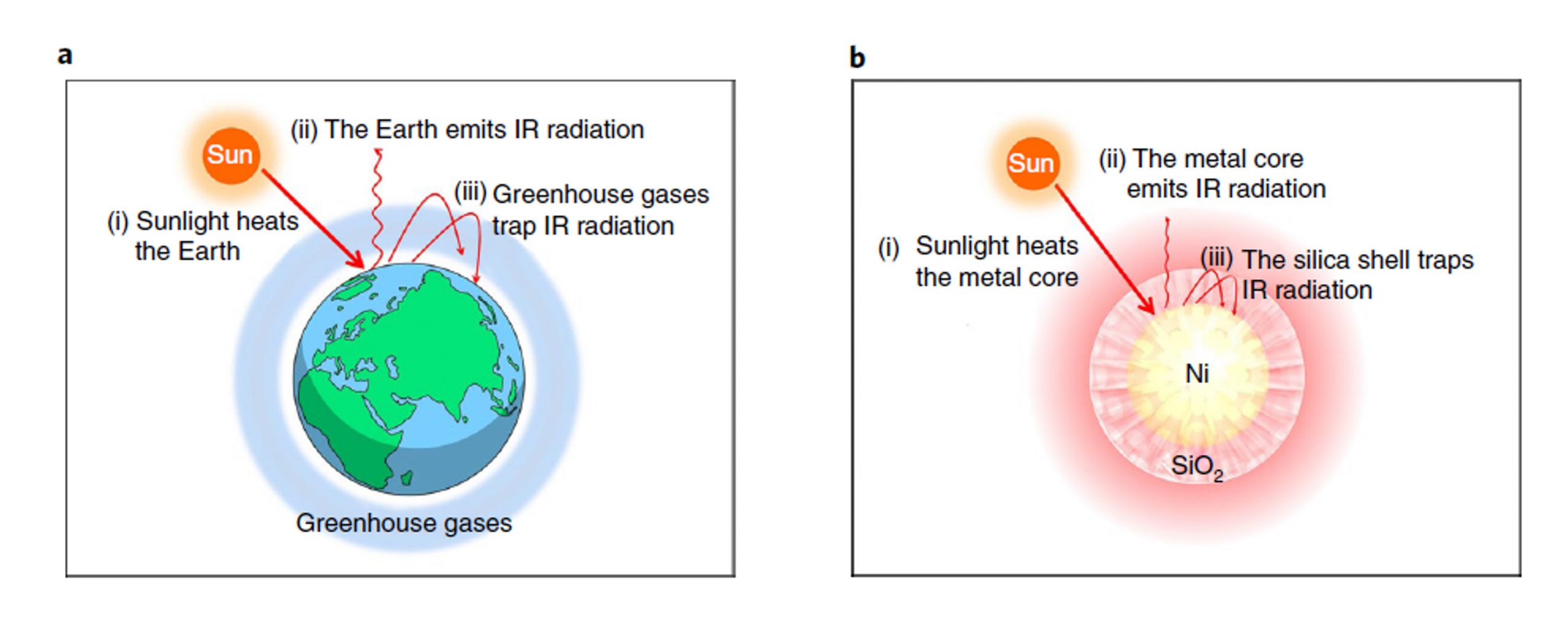Making solar chemicals and fuels enabled by photothermal CO2 catalysis is proving to be a promising pathway to counter climate change and the energy crisis. Advanced photothermal materials design can capture the merits of broad-band spectral absorption and high efficiency in CO2 photocatalysis. In a paper published in Nature Energy, researchers from the groups of Le He, Sochow University, and Geoffrey Ozin, University of Toronto, learned how to mimic the sunlight trapping effect of a conventional greenhouse at the nanoscale, to improve the photon conversion of methanation and reverse water gas shift reactions, with spectacular results. They synthesized a hybrid nickel nanocrystal sheathed by porous silica, the heat insulation and infrared shielding effects of which confine the photothermal energy and surface chemistry to the nickel core, while CO2-H2 reactants and CO-CH4 products enter and escape through the porous shell. In essence, a nanoscale greenhouse has been discovered which facilitates high efficiency CO2 supra-photothermal catalysis.
-
Recent Posts
- Congratulations to Geoff’s solar ethene and hydrogen paper on Matter
- Congratulations to Geoff’s heterogeneous catalysis paper on Matter
- Congratulations to Geoff’s birthday paper of CO2 photocatalysis on Matter
- Could modified train cars capture carbon from the air? This team has a plan to make it happen
- Sand batteries that are dirt cheap
Recent Comments
Categories
Header Courtesy of Digital Westex

